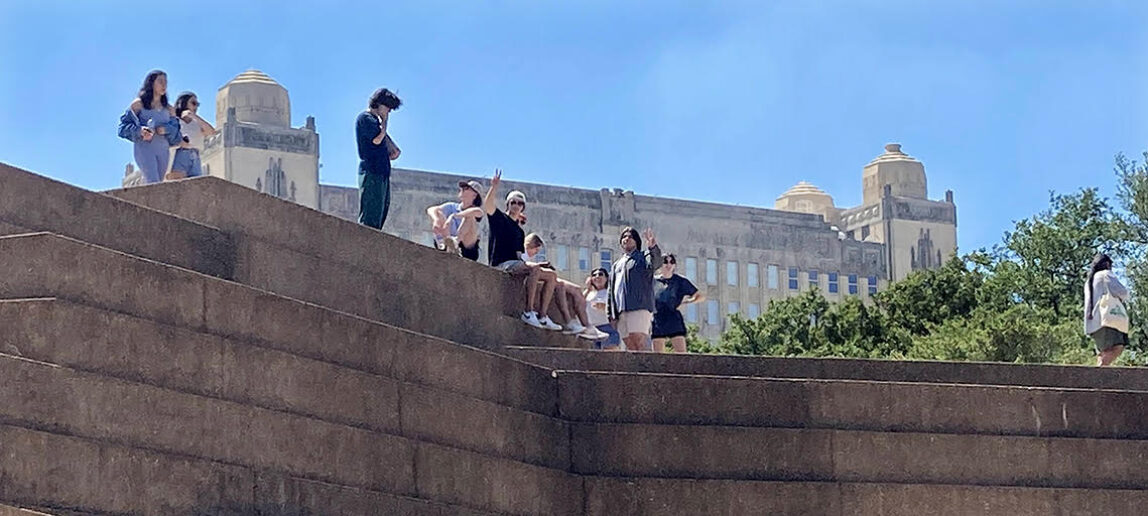Students visit architectural jewels in Dallas-Fort Worth
There are plenty of world class architectural treasures in the Dallas-Fort Worth metroplex, and more than 100 students in an environmental design studio took recent three-day field trip to see them firsthand, as well as visit some of the state’s top design firms.
“A field trip like this is an unforgettable experience for young architects,” said Mark Clayton, architecture professor. “The trip opened the eyes of students to the globally significant architecture of Fort Worth and Dallas.”
Students visited landmarks including the Fort Worth Water Gardens, designed by Johnson/Burgee; the Marty Leonard Community Chapel, designed by Fay Jones: the Kimbell Art Museum, designed by Louis Kahn, Fair Park, and the Dallas Museum of Art. They also went on a tour of the Moody Performance Center, guided by Kirk Johnson and Will Mitchell, leaders of the design team at Corgan.
“The Marty Leonard Chapel is a transcendental and inspiring space designed by Pritzker Prize holder Fay Jones,” said Clayton. “Every architecture student in Texas must spend some time in Louis Kahn’s masterpiece, the Kimbell Museum, and Fir Park is an overlooked jewel with some of the best Art Deco architecture around.”
Led by architecture faculty members including Clayton, Gabriela Campagnol, Benjamin Ennemoser, Sora Key, Priya Jain and Robert Warden, students toured several Dallas-based design firms, whose employees offered tips for students from their own experiences.
“AT Texas A&M I learned to work hard,” said Geoff Reiner ’89, now a senior architect at Jacobs, a Dallas-based international firm that employs over 2,000 architects. “I learned to work smart and to adapt to changing technology. Communication is the most important ability. We have to figure out how to communicate with engineers, clients, other architects and designers. Typically, the architects are the best communicators on the team.”
Another Jacobs architect, Chip Gordon, encouraged students to not be afraid to ask questions.
“If you don’t know, ask!” he encouraged. “The technology changes but the way to think doesn’t.”
Faculty said the firms were very accommodating and helped get the students excited about their potential future careers.
“The passion and absolute commitment to high quality architecture was everywhere and the energy was wonderful, “said Gabriela Campagnol, associate architecture professor, of the Corgan tour.
The firm visits were meant to introduce students to real life in the architecture profession.
“Meeting practitioners in their offices demystified the careers that will come after school,” said Clayton.
He said he hopes the trip inspires them to get on the School of Architecture’s expedited path to architectural licensure via the Integrated Path to Architectural Licensure program.
“I knew it was a great learning opportunity, but I did not expect to learn just as much as I did in just three days,” said Maria F. Padilla, an environmental design student.


